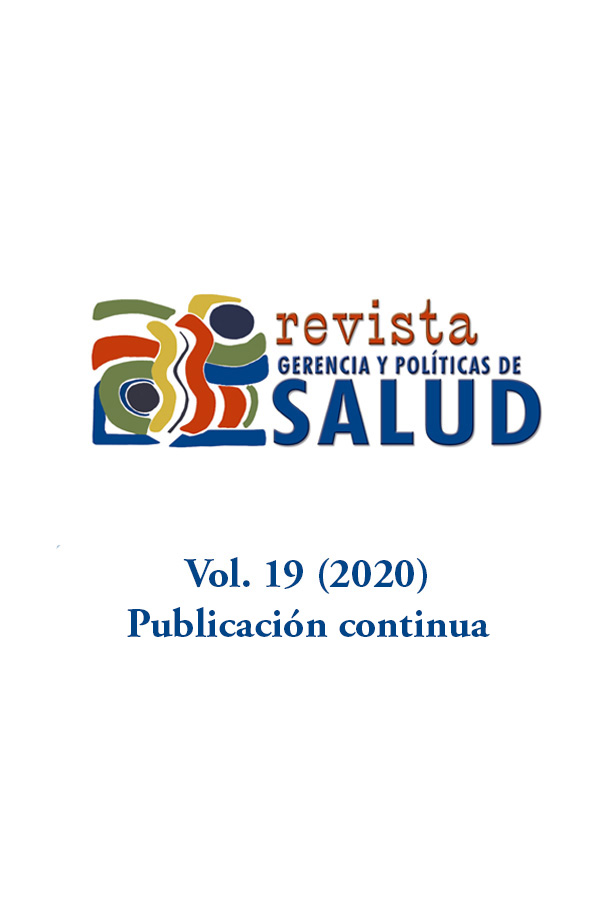Resumen
El acceso a la salud es uno de los pilares básicos del estado de bienestar español. Desde finales de los años setenta, los cambios legislativos introducidos han modificado tanto las condiciones de acceso como el grado de cobertura estatal de los productos farmacéuticos. El sistema de copago farmacéutico establecido en España ha sufrido cambios sustanciales recientes, tanto en la cobertura de medicamentos como en el aporte económico para acceder a estos. El objetivo de esta investigación es conocer las implicaciones de dichas reformas en la población y determinar cuáles son los perfiles más afectados. La aproximación al objeto de estudio se ha realizado siguiendo un pluralismo metodológico. Se analizaron los principales cambios normativos y las fuentes de datos relacionadas con el acceso a productos farmacéuticos. Los resultados confirman la falta de progresividad de las reformas legales en relación al copago sanitario. Igualmente, se muestra un incremento de las dificultades de acceso a los medicamentos prescritos por parte de las personas más vulnerables, en este caso, las mujeres y los hogares con menor renta disponible.
2. Iriart C, Merhy EE. Inter-capitalistic disputes, biomedicalization and hegemonic medical model. Interface (Botucatu). 2017;21(63): 1005-1016. https://doi.org/10.1590/1807-57622016.0808
3. Nichter M. Pharmaceuticals, the commodification of health, and the health care-medicine use transition. En: Nichter M, Nichter M (eds.) Anthropology and International Health. London: Routledge; 2003. p.268-333.
4. Páez, R. La investigación internacional de nuevos medicamentos: una valoración desde la justicia global. Revista Latinoamericana de Bioética. 2016;16(31-2): 188-213. https://doi.org/10.18359/rlbi.1689
5. Díaz-Mosquera SP, Rodríguez-Villamil LN, Valencia-González AM. Análisis de publicaciones en promoción de la salud: una mirada a las tendencias relacionadas con prevención de la enfermedad. Rev Gerenc Polít Salud. 2015; 14(28): 32-47. https://doi.org/10.11144/Javeriana.rgyps18-28.apps
6. Rawls J. Teoría de la justicia. Cambridge: The Belknap Press of Harvard University Press; 1971.
7. Sen A. Nuevo examen de la desigualdad. Madrid: Alianza Editorial; 2003.
8. Vargas-Chaves I. Redimensión de las políticas públicas frente al acceso a medicamentos: entre la ausencia, la permisividad y el abandono estatal. Estudios Socio-Jurídicos. 2015;17(1):169-193. https://doi.org/10.12804/esj17.01.2014.05
9. Cantero J. Constitución y derecho a la protección de la salud. En: Francisco Balaguer F, Arana E (eds.) Libro homenaje al profesor Rafael Barranco Vela. Cizur Menor, Navarra: Thomson Reuters-Civitas; 2014. p.1511-1555.
10. Jiménez-Martín S, Viola AA. El sistema de salud en España en perspectiva comparada. Fedea; 2014. http://sanidad.fedea.net/docs/informe.pdf.
11. Jiménez-Martín S, Viola AA. Consumo de medicamentos y copago farmacéutico. Fedea; 2016. http://documentos.fedea.net/pubs/eee/eee2016-06.pdf
12. Monteverde M, Tomas S, Acosta L, Garay S. Envejecimiento poblacional y magnitud de la dependencia en Argentina y México: perspectiva comparada con España. ALAP Revista Latinoamericana de Población. 2016;10(18): 135-154. https://doi.org/10.31406/relap2016.v10.i1.n18.6
13. Martínez-López JA, Frutos L, Solano JC. Los usos de las prestaciones económicas de la dependencia en el municipio de Murcia. Un estudio de caso. Revista Española de Sociología. 2017;26(3): 97-113. https://doi.org/10.22325/fes/res.2017.37
14. Guttier MC, Pinto M, Luiza L, Bertoldi AD. Impact of interventions to promote the use of generic drugs: a systematic review. Ciênc Saúde Colet. 2017;22(8): 2627-2644. https://doi.org/10.1590/1413-81232017228.05762017
15. Institute for Human Data Science. The global use of medicine in 2019 and Outlook to 2023 [Internet]. IQVIA; 2019 [citado el 22 de abril de 2020]. 60 p. Recuperado de https://informatori.it/wp-content/uploads/2019/03/the-global-use-of-medicine-in-2019-and-outlook-to-2023.pdf.
16. OCDE. Health at a glance 2017. OCDE; 2017. https://www.oecdilibrary.org/docserver/4dd50c09en.pdf?expires=1587122407&id=id&accname=guest&checksum=41D3AA2CF271F0A196A0CB7ED1B21347
17. Klein E, Van Boeckel, TP, Martínez, EM, Pant E, Granda S, Levin SA, Goossens H. Global increase and geographic convergence in antibiotic consumption between 2000 and 2015. PNAS. 2018;115(15): 3463-3470. https://doi.org/10.1073/pnas.1717295115
18. OCDE. Health at a Glance 2015. OCDE; 2015. http://www.oecd.org/health/health-systems/health-at-a-glance-19991312.htm.
19. Foessa. VII Informe sobre exclusión y desarrollo social en España. Fundación Foessa; 2014. 686 p. https://www.foessa2014.es/informe/uploaded/descargas/VII_INFORME.pdf
20. López I Casasnovas G. Una valoración de opciones para la política sanitaria española en un contexto descentralizado. Cuadernos de Ciencias Económicas y Empresariales. 2005;49: 19-32. https://dialnet.unirioja.es/servlet/articulo?codigo=2251127
21. Silva E, Paiva A, Bitu N, Peres Do Souto R, Rocha MDF, et al. Perfil socioeconómico e farmacoterpêutico dos usuarios do programa farmacia popular na unidade de Juazeiro do Norte-CE. Infarma. 2017;29(3): 255-263. http://dx.doi.org/10.14450/2318-9312.v29.e3.a2017.pp255-263
22. Rodríguez-Feijoó S, Rodríguez-Caro A. El copago farmacéutico en España tras la reforma del año 2012 desde la perspectiva del usuario. ¿Evidencias de inequidad? Gac Sanit. 2019;1806: 1-7. https://doi.org/10.1016/j.gaceta.2019.09.009
23. Martínez-López JA, Martínez-Gayo G. Implicaciones del aumento del copago farmacéutico en España: una nueva privación material. Convergencia: Revista de Ciencias Sociales. 2019;81: 1-21. https://doi.org/10.29101/crcs.v26i81.10327
24. Instituto Nacional de Estadística. Encuesta de Condiciones de vida. Módulo de Salud del año 2017. Instituto Nacional de Estadística; 2017 https://www.ine.es/dynt3/inebase/index.htm?type=pcaxis&path=/t25/p453/modulo/2017/&file=pcaxis&L=0&dh=0&capsel=0.
25. EAE Business School. El gasto farmacéutico en España 2016. EAE Business School; 2016. https://www.eae.es/actualidad/faculty-research/el-gasto-farmaceutico-publico-por-habitante-sube-por-segundo-ano-consecutivo-y-se-situa-en-20531eu.
26. Ministerio De Sanidad, Consumo y Bienestar Social. Barómetro Sanitario; 2018. https://www.mscbs.gob.es/estadEstudios/estadisticas/ BarometroSanitario/home_BS.htm
La revista Gerencia y Políticas de Salud se encuentra registrada bajo la licencia Creative Commons Reconocimiento 4.0 Internacional. Por lo tanto, esta obra se puede reproducir, distribuir y comunicar públicamente en formato digital, siempre que se reconozca el nombre de los autores y a la Pontificia Universidad Javeriana. Se permite citar, adaptar, transformar, autoarchivar, republicar y crear a partir del material, para cualquier finalidad (incluso comercial), siempre que se reconozca adecuadamente la autoría, se proporcione un enlace a la obra original y se indique si se han realizado cambios. La Pontificia Universidad Javeriana no retiene los derechos sobre las obras publicadas y los contenidos son responsabilidad exclusiva de los autores, quienes conservan sus derechos morales, intelectuales, de privacidad y publicidad.
El aval sobre la intervención de la obra (revisión, corrección de estilo, traducción, diagramación) y su posterior divulgación se otorga mediante una licencia de uso y no a través de una cesión de derechos, lo que representa que la revista y la Pontificia Universidad Javeriana se eximen de cualquier responsabilidad que se pueda derivar de una mala práctica ética por parte de los autores. En consecuencia de la protección brindada por la licencia de uso, la revista no se encuentra en la obligación de publicar retractaciones o modificar la información ya publicada, a no ser que la errata surja del proceso de gestión editorial. La publicación de contenidos en esta revista no representa regalías para los contribuyentes.



